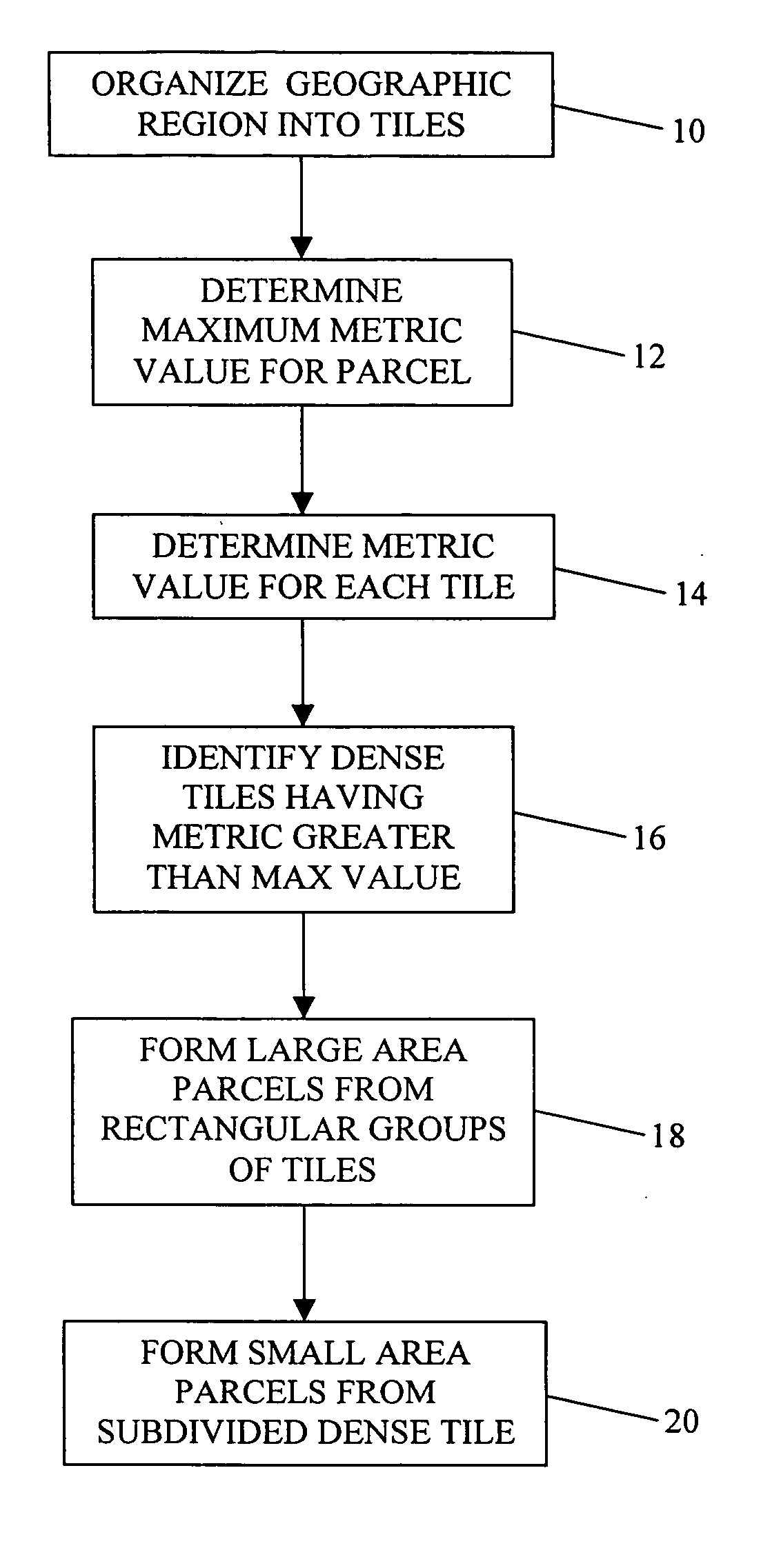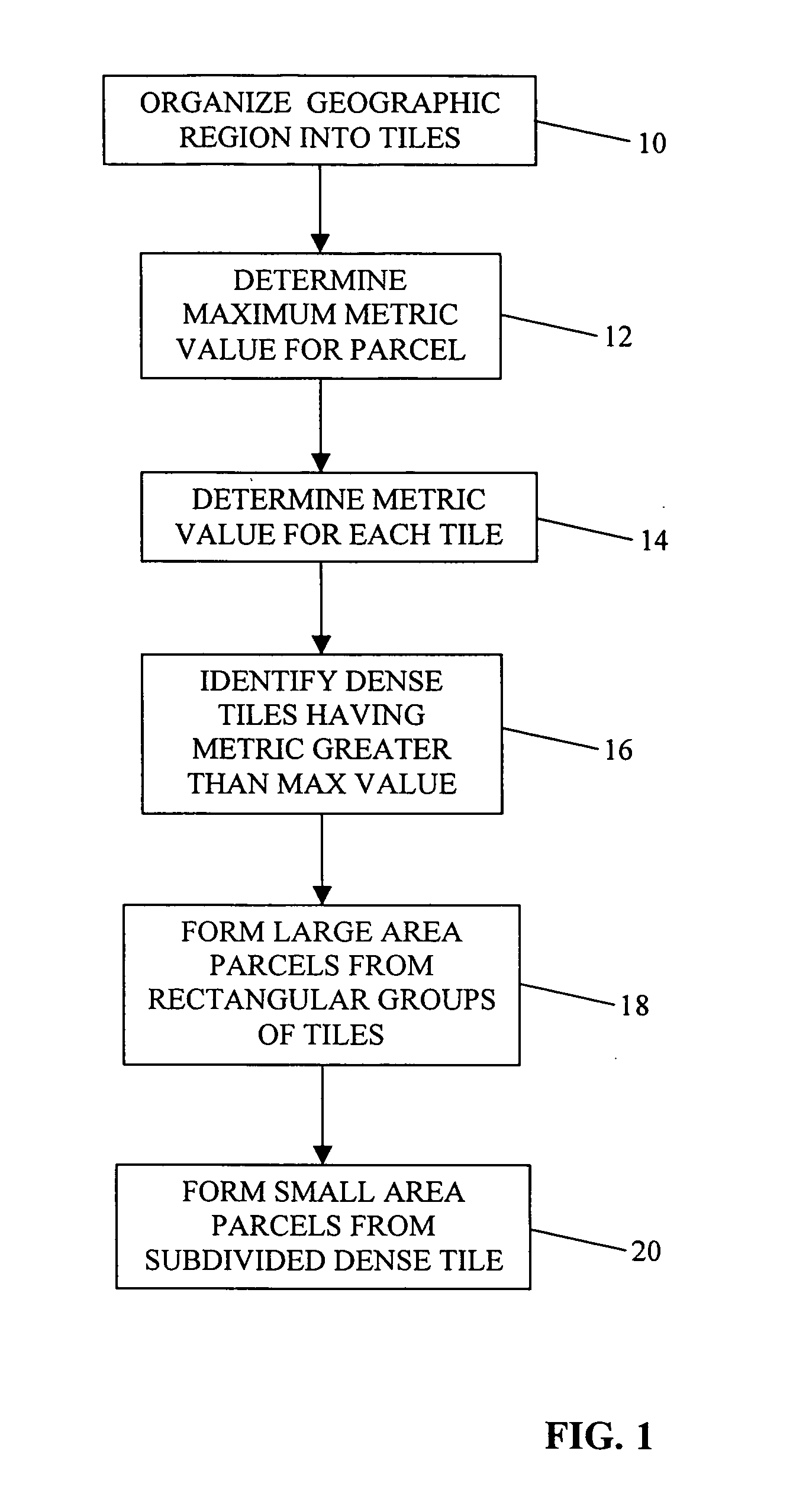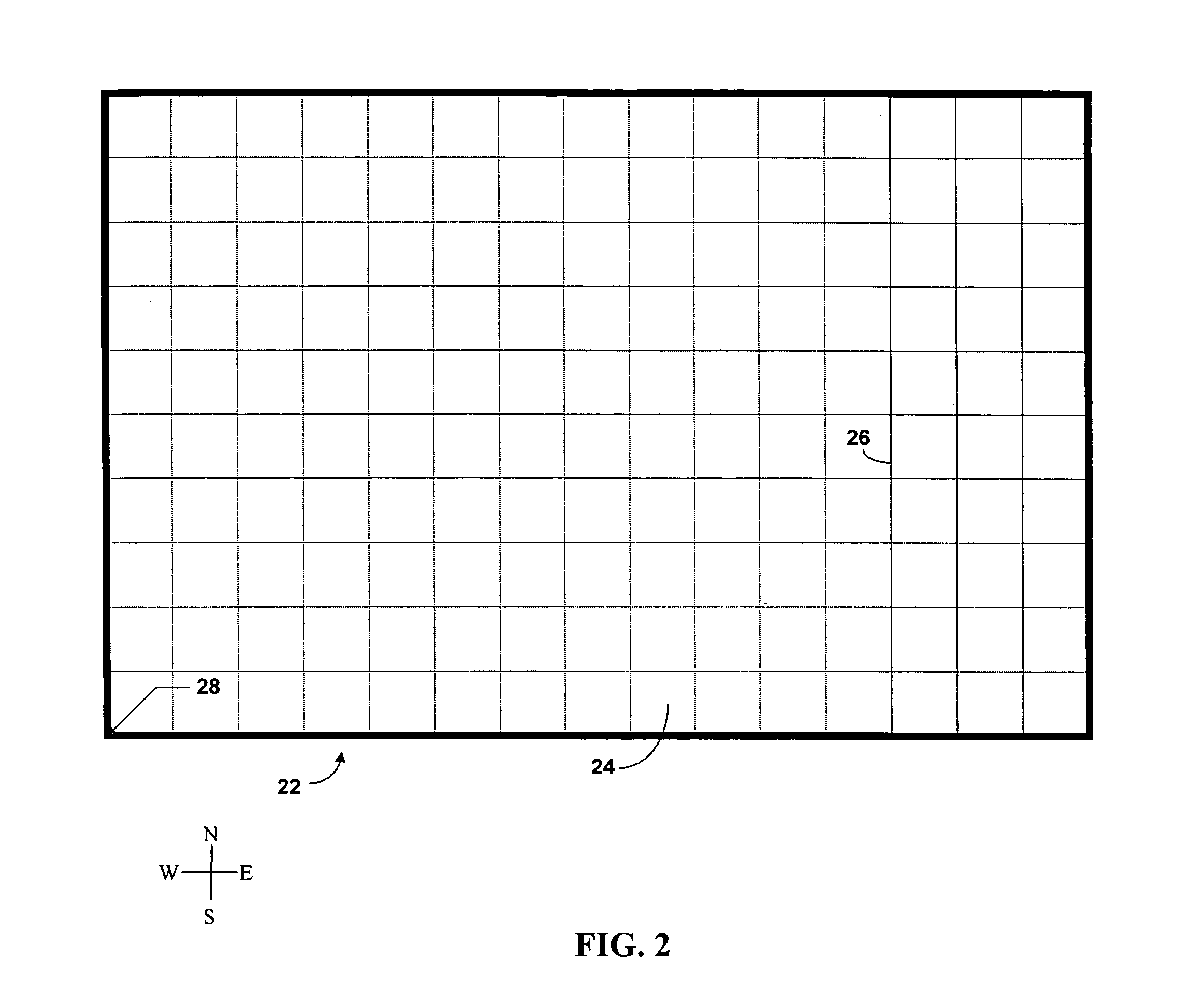Method for organizing map data
a map data and data structure technology, applied in the field of map data organization and storage, can solve the problems of large data size of parcels, adversely affecting the performance of the navigation system, and excessive overhead for storing information about each parcel
- Summary
- Abstract
- Description
- Claims
- Application Information
AI Technical Summary
Benefits of technology
Problems solved by technology
Method used
Image
Examples
Embodiment Construction
[0014] Parcelization is the process of dividing a map database of a geographic region into spatial parcels. Generally, it is desired to store data representing geographic features, such as roads, spatially based upon the physical proximity of the geographic features that they represent. Data records that are physically (or logically) close together in the map database (and possibly also close together on a storage medium upon which the map data are stored) represent geographic features that are close together physically in the geographic region. To spatially organize data representing geographic features, the data representing the geographic features are organized into parcels. Each parcel of data includes data representing features that are located physically proximate to each other in the geographic region. As described further below, each parcel includes data that represent physical features encompassed within a geographic area of a size, shape and position determined by a parcel...
PUM
 Login to View More
Login to View More Abstract
Description
Claims
Application Information
 Login to View More
Login to View More - R&D
- Intellectual Property
- Life Sciences
- Materials
- Tech Scout
- Unparalleled Data Quality
- Higher Quality Content
- 60% Fewer Hallucinations
Browse by: Latest US Patents, China's latest patents, Technical Efficacy Thesaurus, Application Domain, Technology Topic, Popular Technical Reports.
© 2025 PatSnap. All rights reserved.Legal|Privacy policy|Modern Slavery Act Transparency Statement|Sitemap|About US| Contact US: help@patsnap.com



